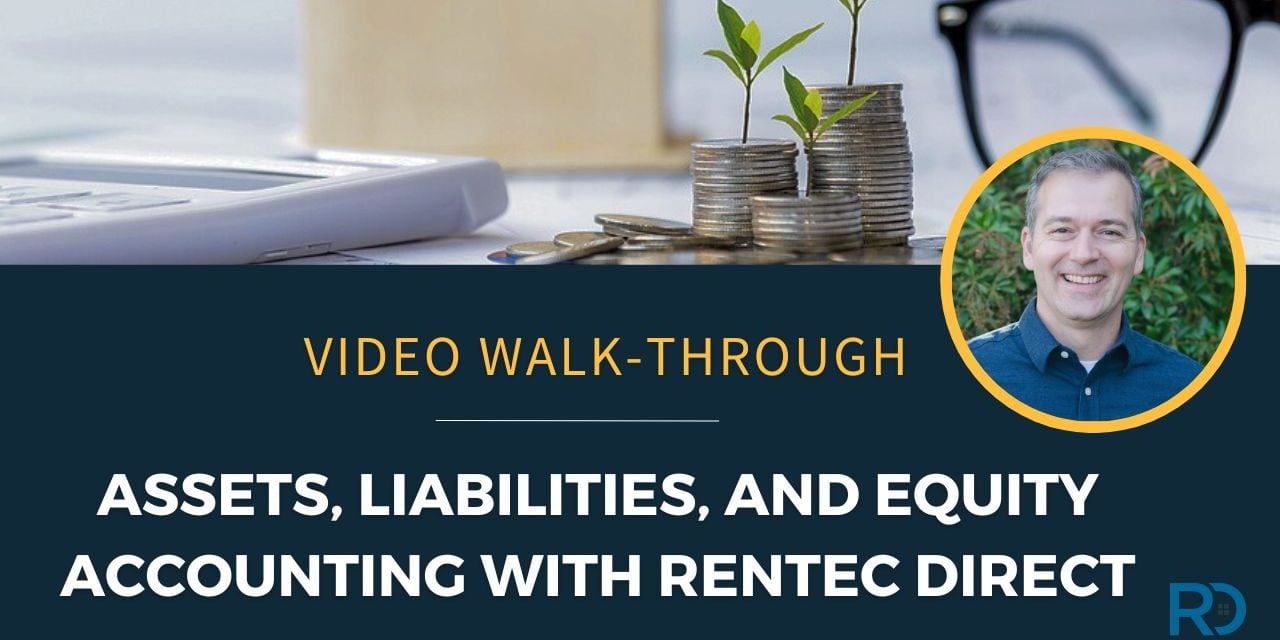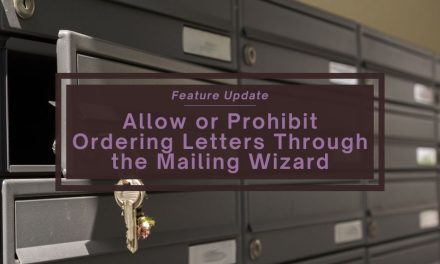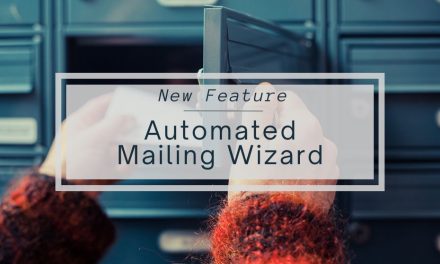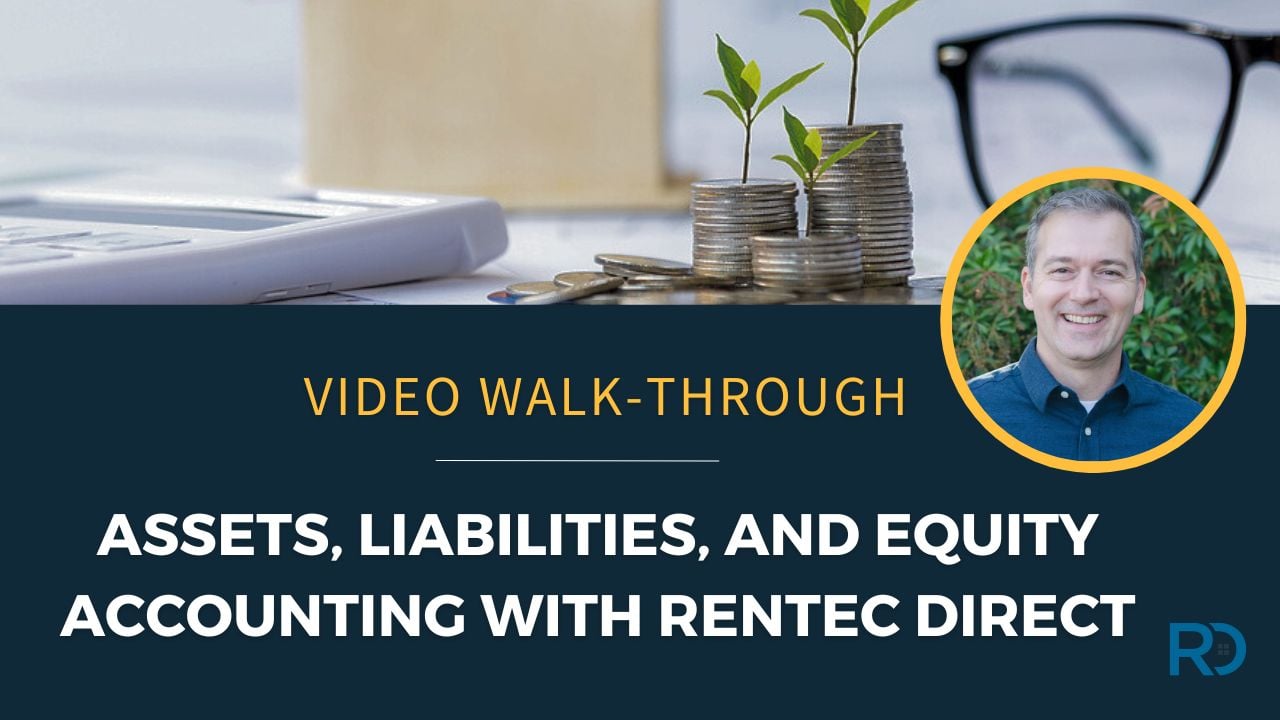
Rentec Direct property mangement software now has full accounting features which include include asset, liability, and equity accounting. Rentec Direct’s president and founder, Nathan Miller, explains the new benefits and key features within your Rentec Direct account.
Learn more about the full accounting features in Rentec Direct property management software, which include asset, liability, and equity accounting. Rentec Direct also offers a Balance Sheet report and a Balance Discrepancies report.
Join Rentec Direct’s president and founder, Nathan Miller, on this video walk-through of the new accounting features where he shows you key features and common scenarios on how to use the Balance Sheet report and setup your account for advanced asset and liability accounting.
For a detailed explanation of the Full Accounting Options: Assets, Liabilities, and Equity with a True Balance Sheet, check out our announcement on the Rentec Direct Blog and click the notification on your Rentec Direct Summary Page.
— The Rentec Direct Balance Sheet report is the typical balance sheet your accountant or CPA would ask for to do your taxes or bookkeeping. This new report includes assets, liabilities, and equity balances as of a specified date.
— The Rentec Direct Balance Discrepancies report allows you to search for financial transactions that have not been applied to an Account and result in balance discrepancies. This report is a great addition to help identify transactions that may cause reconciliation or imbalance issues.
Assets, Liabilities, and Equity Accounting with Rentec Direct – Video Transcript:
**Kaycee:**
We’re here today to showcase new accounting features available in your Rentec Direct account for asset, liability, and equity accounts. These new full accounting options include a full chart of accounts, profit and loss reports, and tools to help you identify transactions that may cause problems with reconciliation and balancing.
I’m Kaycee with Rentec Direct, and our president and founder, Nathan Miller is with me today to show you these assets, liabilities, and equity accounting features.
**Nathan:**
Thanks, Kaycee.
Let’s go into the Rentec Direct software and show you the assets, liabilities, and equity account features.
I’d like to start by going over to Settings and show a new option within accounting defaults. We have this new setting to use strict accounting rules. Now, this setting is going to help you or your employees make sure that mistakes are not made when entering new transactions.
And just to show this off a little bit today, I’m going to turn it off so you can see the impact and what we can catch. For now, let’s turn that off.
Now, I’m going to show you the main new report in the system, called a Balance Sheet report. Right now, I have this empty account, so all these numbers are zeros. We’ve got all of our asset, liability, and equity accounts, and everything equals zero. As we make some changes and work in our account today, these values are going to change, and we’ll see that happening.
So, the first thing I’m going to do is perform some typical tasks you would do when setting up your account or just using your account on a daily basis. Since this one is empty, we’re going to go ahead and create a bank account.
For this bank account, I’m going to set an opening balance of $10,000. This is a new field when you’re creating accounts, and you’ll have this option for opening balances when adding a bank account or any assets or liabilities in the system.
This will automate many tasks related to this value, and I’ll show you how these impact the balance sheet once it’s done. Since we’re here, I’m going to go ahead and add an additional bank account for our security deposits, and I’m going to leave its opening balance at zero.
Next, let’s add a property.
Here’s another new option related to the balance sheet. When you’re adding a property, you might want to link an asset account to that property. In this case, I’m going to pick a number and say the property is worth $250,000. We’re not going to add any marketing information for this demo.
Now, let’s go to the new section under Banking called “Chart of Accounts.” In the chart of accounts, you’ll see some of the information we just entered, like the $250,000 asset account for the property and the $10,000 we put into the demo bank account. You’ll notice the total of those equals $260,000, which automatically posts into the opening balance account. This happens automatically—you don’t have to do it manually—and it keeps your balance sheet balanced between your assets, liabilities, and equity.
Next, let’s take a look at the balance sheet, which mirrors some of those same numbers. We see our total assets equal $260,000, and the total for our liabilities and equity also equals $260,000. It’s very important in accounting that these two numbers match. As we continue working today, we’ll see what can unbalance them and how to fix that.
Now, let’s move in a tenant.
I’m going to go ahead and post some income for the tenant we just moved in—$466.67, which is their balance. This is a cash transaction, so you should be selecting a bank account or an undeposited funds account that this goes into.
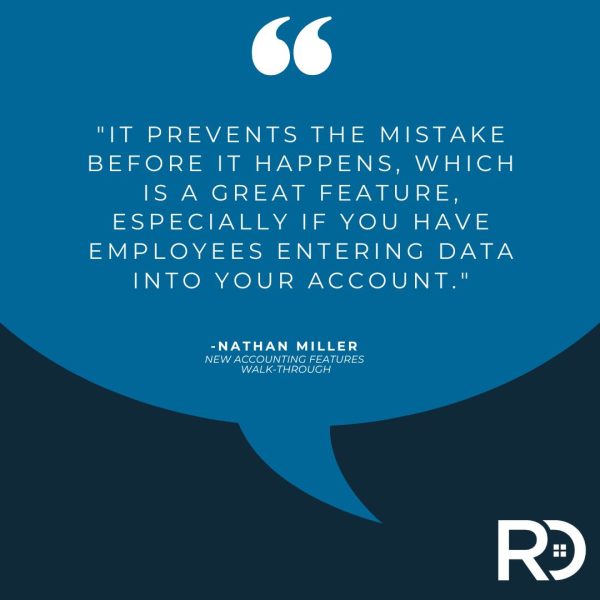
However, I’m going to purposely not select anything so I can show off a new feature. I selected no bank account, and now I’m going to run back to the balance sheet. You’ll notice the assets and liabilities don’t match anymore. We have $260,000 in assets and $260,466 in liabilities and equity. This happened because we posted rental income, which goes into retained earnings, but we didn’t put it in a bank account, so it didn’t get reflected in the assets.
This is a typical scenario, and we have a new report called Balance Discrepancies to catch these issues. The report shows exactly which transactions are causing reconciliation problems or balance sheet discrepancies. Fixing it is easy—you click the transaction, correct the error, and save it. Now, if we go back to the balance sheet, you’ll notice the numbers match again.
Let’s go back to accounting defaults and turn the strict accounting rule back on.
I’ll repeat the same steps we just did, but now, when I try to post $100 of income without selecting a bank account, I get a big red error that says, “Bank account is required.” It prevents the mistake before it happens, which is a great feature, especially if you have employees entering data into your account.
**Kaycee:**
Nathan, what are some common use cases where you might use an asset or liability account?
**Nathan:**
There are quite a few, but one common use case is managing and posting expenses for properties.
Let’s go back to the chart of accounts and create a liability account for a loan related to the property we added earlier. The property is valued at $250,000, but most properties aren’t wholly owned. So, we’ll create a long-term liability for the loan, which is $200,000.
Now, let’s go to the demo bank and post a mortgage payment.
I’ll post $1,000, with $100 going to interest and $900 going toward the loan principal. If we look at the balance sheet, the bank balance went down, the loan balance decreased by $900, and retained earnings dropped by $100 for the interest payment. Our total assets and liabilities remain balanced, which is a typical everyday transaction.
**Kaycee:**
I understand we can now archive accounts in Rentec Direct. Can you explain that feature a bit more?
**Nathan:**
Yes, Rentec Direct added the ability to archive accounts while working on the new Chart of Accounts.
If you accidentally create an asset account that you don’t need, you can archive it. When an account is archived, Rentec Direct automatically posts an offsetting entry to zero out the balance so the balance sheet remains accurate.
Let me show you: I’ll archive the $250,000 asset account we created earlier, and you’ll see that $250,000 is removed from the balance sheet automatically.
**Kaycee:**
Many of our clients use Rentec Direct for managing security deposits. Can you show us if anything has changed with handling security deposits?
**Nathan:**
Yes, we’ve simplified the interface for security deposits.
Previously, there was a single “Transfer Deposit” option that caused confusion. Now, we have two distinct options: one for transferring deposits between bank accounts and another for transferring deposits to owners.
Every security deposit transaction now affects the security deposits asset account.
Let me show you by posting a $1,000 security deposit for a tenant. I’ll deposit it into the security deposits bank account, and you can see that both the bank account and the security deposits liability account are updated. This makes it easier to track deposit transactions.
**Kaycee:**
Nathan, it seems like these new accounting features will be very helpful for our clients. Can you explain why the Rentec Direct development team focused on these features and what the benefits are for our clients?
**Nathan:**
This was one of the most highly requested features for a number of years. It took us over a year and a half to complete, and it includes assets, liabilities, equity, account archiving, and enhanced security deposit features.
The big benefit is that Rentec Direct clients no longer need to export their records to third-party accounting software like QuickBooks or Xero. With the balance sheet and profit and loss reports, everything your accountant needs to file your taxes is right in Rentec Direct.
**Kaycee:**
Thanks again, Nathan! And to all our clients, if you need any assistance understanding these new features or help with your account, feel free to reach out to your success team at Rentec Direct.
We look forward to serving you!
Need help? Contact your Success Team
You can reach your Rentec Direct Client Success Team by email, phone, and live chat in your software application.
By email: success@rentecdirect.com By phone: (800) 881-5139
For more details on using your Rentec Direct accounting features visit: New Feature | Full Accounting Options with Assets, Liabilities, and Equity with a True Balance Sheet
Suggest a Feature:
Our goal is always to make your tasks as a landlord or property manager simpler, quicker, and more efficient. One of the ways we accomplish this is by reviewing valuable feedback and input from our awesome clients. If there is anything you would like to see added to enhance your Rentec Direct experience, please send your ideas and suggestions to success@rentecdirect.com.
About Rentec Direct:
Rentec Direct provides industry-leading property management software and tenant screening solutions for real estate professionals. Key features include online rent payments, tenant and owner portals, vacancy listing syndication, accounting tools, and tenant background reports. Founded in 2007, Rentec Direct is the third-largest software in its sector and is consistently the highest-rated by investors, landlords, and property managers. Recognized on the Inc. 5000 list of fastest-growing private companies for eight consecutive years, Rentec Direct was also named Real Estate Company of the Year in the 2024 American Business Awards and listed among the U.S. Chamber of Commerce’s Top 100 Small Businesses. www.rentecdirect.com.

